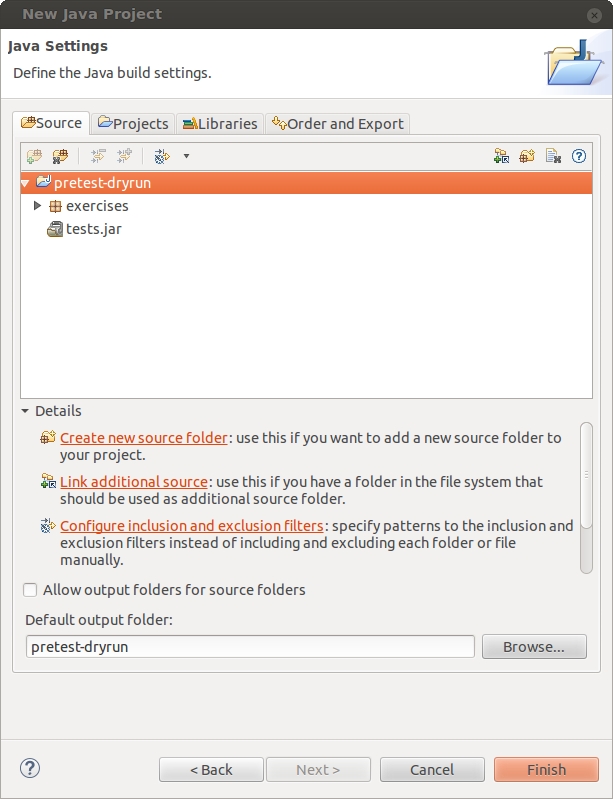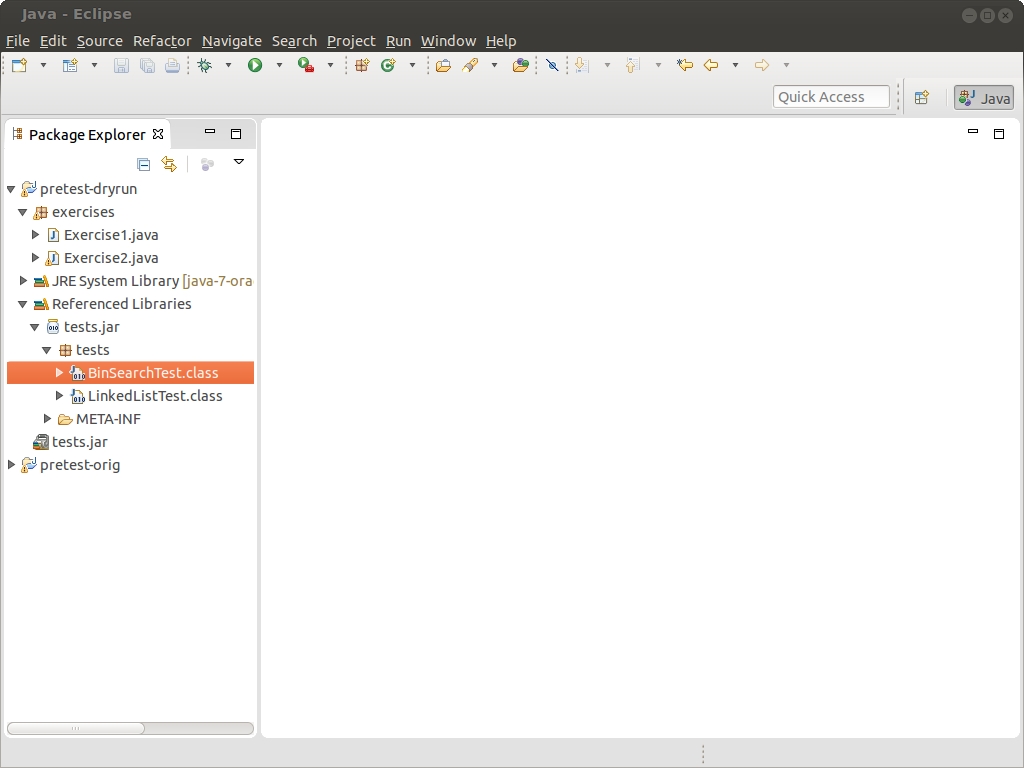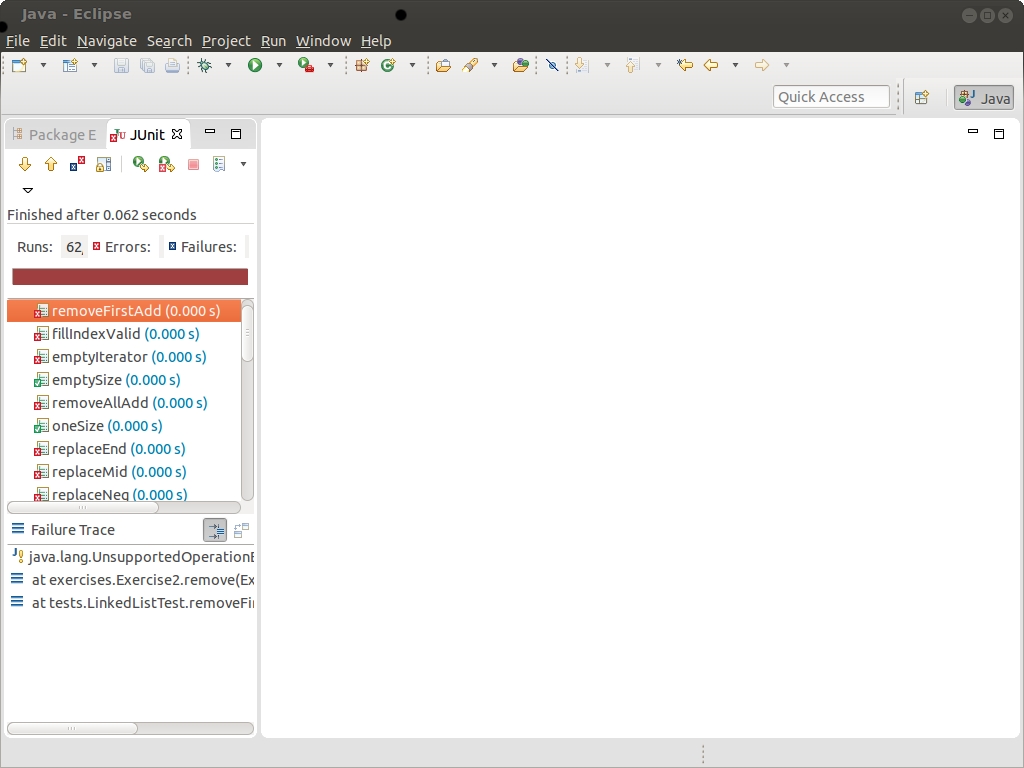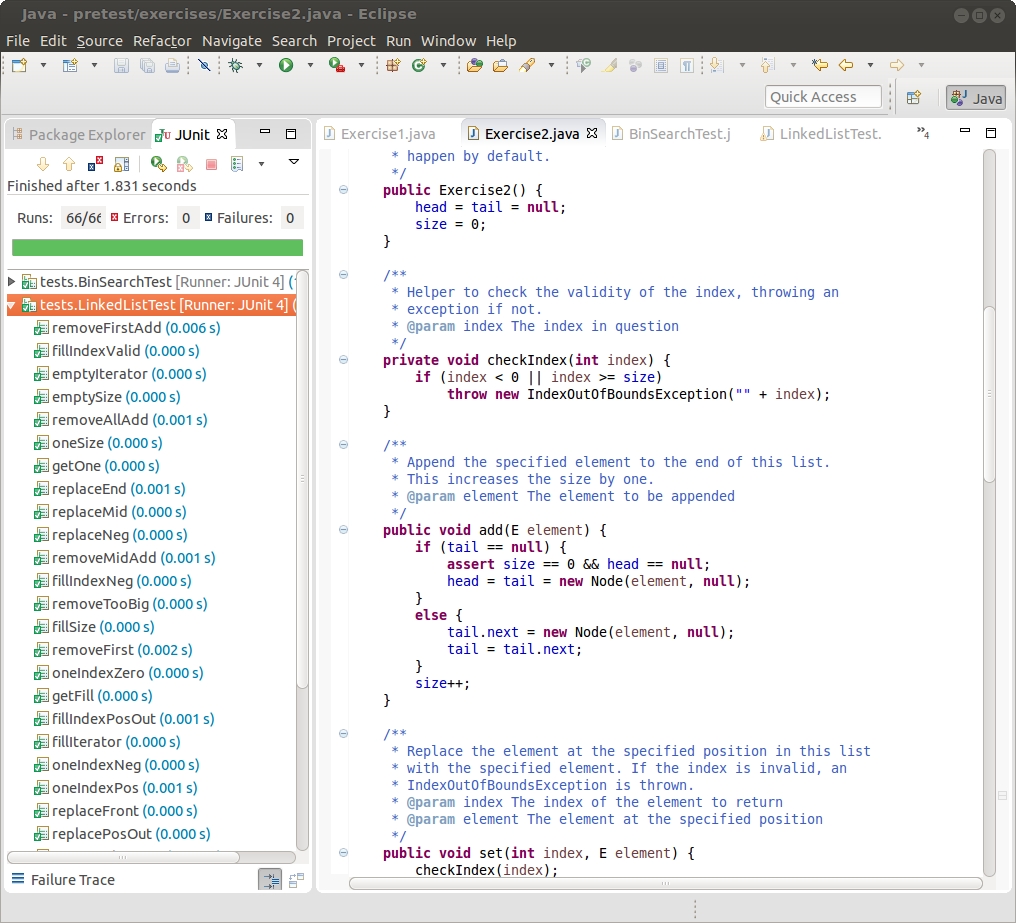
This goal of this exercise is to demonstrate how difficult complete correctness is, even on reasonably simply tasks. This may be a humbling exercise, but we hope not a discouraging one.
Secondary goals include getting your mind back into Java programming and, more importantly, back into thinking about algorithms and data structures; and satisfying my own curiosity about how much you have retained from Programming II.
You will be asked to do a series of problems exercising mostly Programming I material. They will be tested using given JUnit tests. Conventional wisdom is that even professional programmers have difficulty getting perfect solutions (covering all corner cases) to problems like these when put under time pressure. Also tasks like this aren't uncommon in job interviews. Let's see how you do.
Make a folder and copy the starter code from the course folder:
cp -r ~tvandrun/Public/cs345/pretest/* .
Open Eclipse. I recommend you make a new workspace for this course. Start a new Java project. Uncheck "Use default location" and instead select as a location the folder that you made (ie, the folder containing the things copied from the course folder). Hit "Next>" and confirm that you see something like this:

Hit "Finish".
In the next screen, in the Package Explorer tab, right click on "tests.jar"
and select "BuildPath->Add to build path".
Then expand "tests.jar" until you see BinSearchTest.class
and LinkedListTest.class.

Select BinSearchTest.class and click on the
run button.
If you see something like the following, then you're all set up.

Open Exercise1.java.
Your task is to implement binary search.
The method stub takes a sorted array array
of some type generic T that implements
Comparable and a specific item
of that type.
Recall that the Comparable interface has a method
compareTo() that can be used like
x.compareTo(y)
...and it will return a negative number if x is "less than" y, a positive number if y is "less than" x, and 0 if x and y are "equal". Some details:
Test your implementation using BinSearchTest.
You are not given the source code of the test cases, but JUnit will give
you a failure message indicating something of what is wrong.
Mainly you need to think about your code.
When you pass all the tests (or when you're stumped), move on.
Open Exercise2.java.
Your task is to implement certain operations in a linked list class.
Read the documentation and code through the add() method
to get a feel for how this linked list works.
Run the JUnit test LinkedListTest.class.
Out of the box the following tests should pass:
emptySize, oneSize,
fullSize.
The rest should fail.
Write the get() method according to the
specification given in the documentation.
Test by rerunning the JUnit test.
If you write this correctly, the following tests should pass (in addition
to the tests that pass out of the box, which should still pass):
emptyIndexZero
emptyIndexNeg
emptyIndexPos
oneIndexZero
oneIndexNeg
oneIndexPos
fillIndexValid
fillIndexNeg
fillIndexPosOut
Again, you don't have the source code for the tests, but the error messages (as well as the names of the tests), should give some hints about what's wrong if they fail. When they all pass, try the next one.
Write the set() method according to the
specificiation given in the documentation.
This should be very similar to get(), right?
You may overwrite the datum of an existing node---you do not need
to make a new node.
If you write this correctly, the following additional test should pass
(and no previously-passing test should break):
replacePosOut
Write the iterator() method according to the
specification given in the documentation.
For convenience, you can find a stub for an anonymous inner class
commented out.
Note that you do not need to implement the remove()
method of the Iterator (leave it as it is,
throwing the exception).
If you write this correctly, the following additional tests should pass
emptyIterator
oneIterator
fillIterator
replaceEnd
replaceMid
replaceFront
If you've made it this far, I'm already impressed.
Let's see if you can push it even further.
Implement the remove() method of the
Exercise2 class (not the
remove() method of the iterator you wrote
in the previous part),
according to the speficiation given in the documentation.
If you write this correctly, the following additional tests should pass
removeFirstAdd
removeAllAdd
removeMidAdd
removeTooBig
removeFront
removeLast
removeLastAdd
removeAll
removeMid
removeNeg
Let's see some green bars.

Please copy your files to your turn-in folder:
cp exercises/Exercise*.java /cslab.all/ubuntu/cs345/turnin/(your id)/pretest